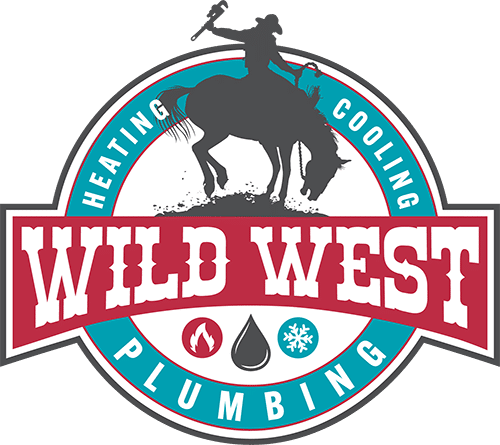Living in Kalispell and the Flathead Valley offers breathtaking mountain views, access to Glacier National Park, and a community that’s second to none. However, with the beauty of Montana’s natural landscape comes the reality of unpredictable weather patterns, heavy snowmelt, and seasonal rains that can put your home at risk of basement flooding. That’s where a sump pump comes to the rescue.
Our goal at Wild West is to help you safeguard your property from water damage and give you peace of mind. In this article, we’ll explore why sump pumps are essential in Kalispell and the surrounding areas, the types best suited for our local climate, and how to know when it’s time for an upgrade.
Why Sump Pumps Are Essential in the Flathead Valley
Montana’s Flathead Valley is known for its scenic beauty, but it’s also known for its heavy snowfall and rapid snowmelt. When temperatures start to rise, the snow begins to melt quickly, increasing the risk of groundwater seeping into basements. Additionally, spring and summer bring seasonal rains that can saturate the soil, leading to flooding issues.
Even if your basement has never flooded before, it’s better to be safe than sorry. Water damage can lead to costly repairs, mold growth, and structural issues. A reliable sump pump system is your first line of defense against these risks.
- Snowmelt Runoff: Rapid snowmelt can overwhelm the soil around your home, leading to basement seepage.
- Heavy Rainfall: Seasonal rainstorms saturate the ground, increasing hydrostatic pressure on your foundation walls.
- High Water Table: Homes near rivers or lakes, common in the Flathead Valley, are more susceptible to groundwater intrusion.
- Poor Drainage Systems: Improper grading or clogged gutters can direct water toward your foundation.
Types of Sump Pumps for Montana’s Climate
Choosing the right sump pump is crucial for effective water management. We recommend the following types to keep your basement dry, even during the heaviest snowmelt or rainstorm:
1. Primary Sump Pumps
Primary sump pumps are the main defense against water accumulation in your basement. They are available in two types:
- Submersible Pumps: Installed inside the sump pit and are completely underwater. They are quieter and save space but require a larger pit.
- Pedestal Pumps: Positioned above the sump pit, making them easier to maintain but noisier. They are ideal for smaller pits.
Best for: Routine water removal during snowmelt and heavy rain.
2. Battery Backup Sump Pumps
Power outages are common during storms in Montana. A battery backup sump pump ensures your system keeps working even when the power goes out. It automatically activates if the primary pump fails or loses power, providing peace of mind.
Best for: Homes prone to power outages during severe weather conditions.
3. Combination Sump Pumps
These units combine a primary pump with a battery backup system. They offer the best of both worlds, ensuring uninterrupted water removal under any circumstances.
Best for: Homeowners looking for maximum protection and convenience.
Do You Need a Sump Pump in Kalispell?
If you’re still unsure whether you need a sump pump, consider the following signs:
- Previous Flooding Incidents: If your basement has flooded before, it’s likely to happen again without proper protection.
- High Water Table or Wet Soil: Homes near Flathead Lake or with consistently wet soil are at a higher risk.
- Musty Odors or Mold Growth: Persistent dampness or mold indicates excess moisture, which can be managed with a sump pump.
- Visible Water in Basement: Standing water, even in small amounts, is a sign of poor drainage.
When to Replace Your Sump Pump
Just like any other appliance, sump pumps have a lifespan. Most units last between 7 to 10 years with proper maintenance. However, certain factors can shorten their lifespan, including:
- Frequent Use: Heavy snowmelt or consistent rainfall means your pump is working overtime.
- Poor Maintenance: Clogged discharge lines or dirty sump pits can reduce efficiency.
- Rust and Corrosion: Exposure to water and debris can lead to wear and tear.
- Unusual Noises: Grinding or rattling noises indicate mechanical issues that require immediate attention.
FAQs About Sump Pumps in Kalispell and the Flathead Valley
1. How often should I test my sump pump in Montana’s climate?
We recommend testing your sump pump at least once every season, especially before spring snowmelt and fall rainstorms. Pour a bucket of water into the sump pit to ensure it activates and pumps water away from your home. Regular testing helps you catch potential issues before they become costly repairs.
2. What type of sump pump is best for homes in the Flathead Valley?
As we mentioned above, the best sump pump for your home depends on your home’s specific needs. In the Flathead Valley, where snowmelt and heavy rains are common, we typically recommend a combination sump pump system. It includes a primary pump for daily use and a battery backup for power outages, ensuring continuous protection even during severe weather.
3. Do I need a battery backup for my sump pump in Kalispell?
Yes, having a battery backup is highly recommended in Kalispell and the Flathead Valley. Power outages are common during heavy storms, and a battery backup sump pump ensures your system continues working even when the power goes out. This added layer of protection can prevent basement flooding and costly water damage during severe weather events. If you’re unsure about the best backup option for your home, ask our team!
Don’t Wait for the Next Storm – Protect Your Home Today!
In the Flathead Valley, weather can change quickly, turning a calm day into a water emergency. Don’t wait until your basement floods to take action. A reliable sump pump from our team can save you thousands in water damage repairs and give you peace of mind.
Contact us today to schedule a sump pump inspection or installation. Let us help you keep your home safe from water damage, no matter what Mother Nature throws your way.


